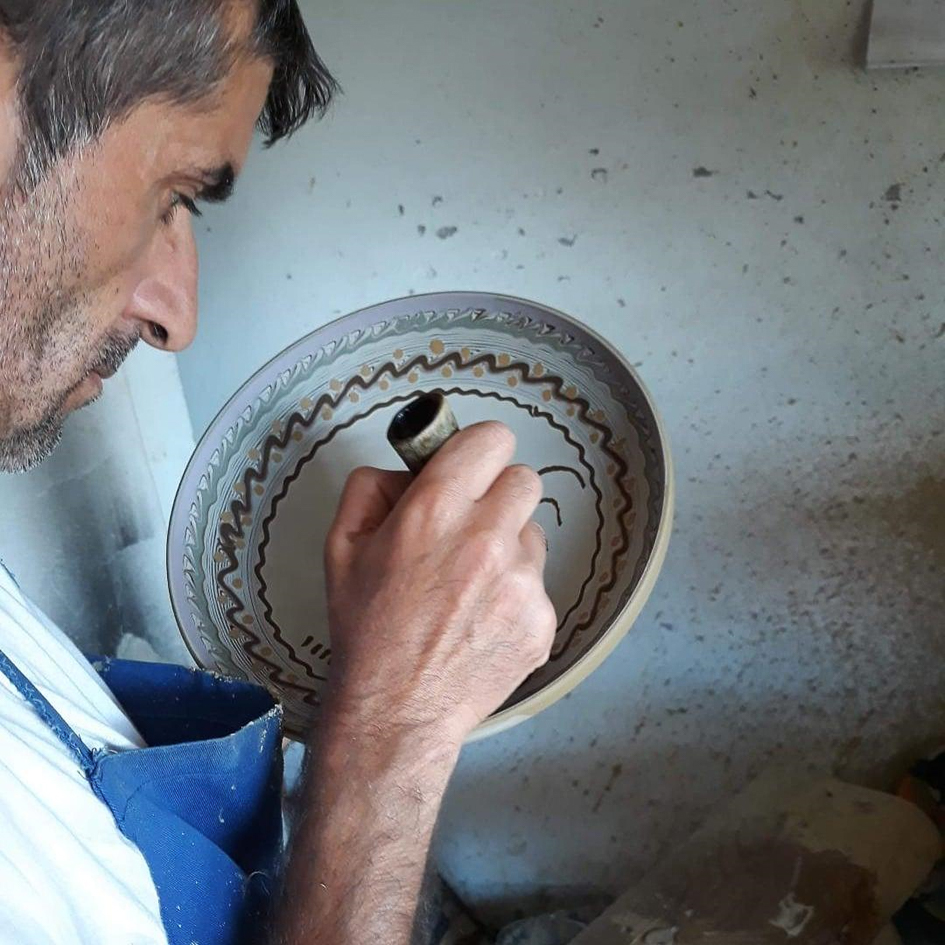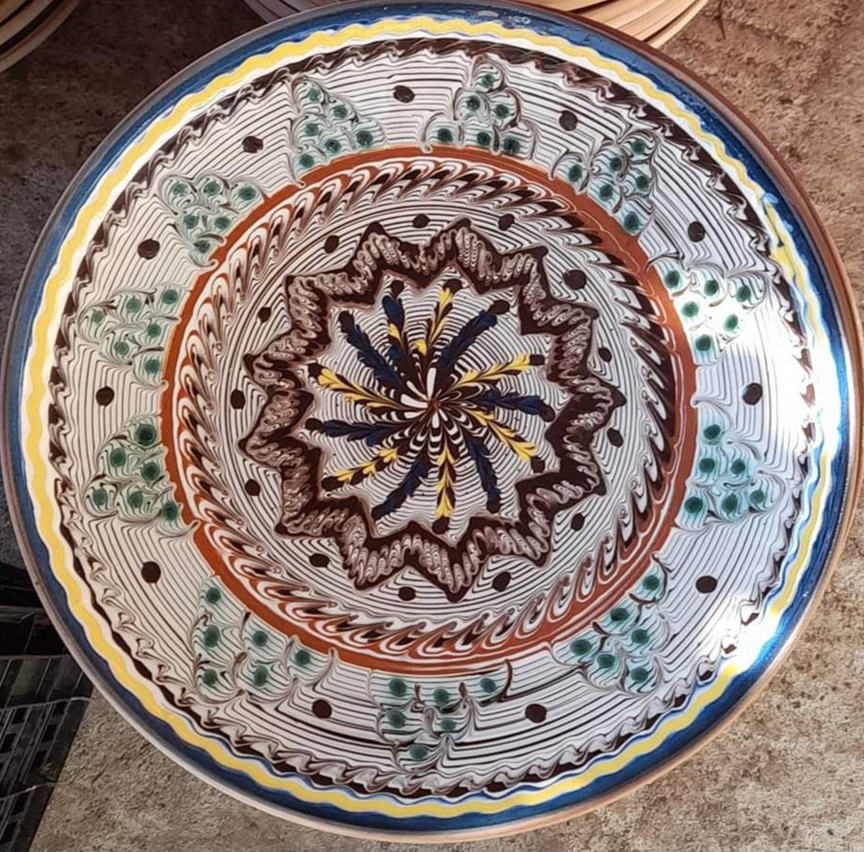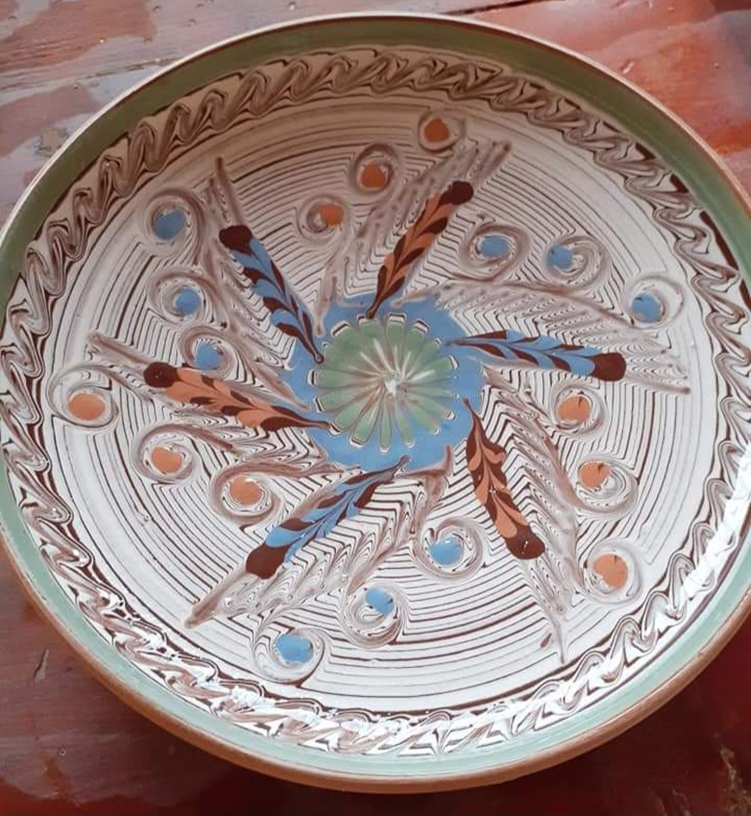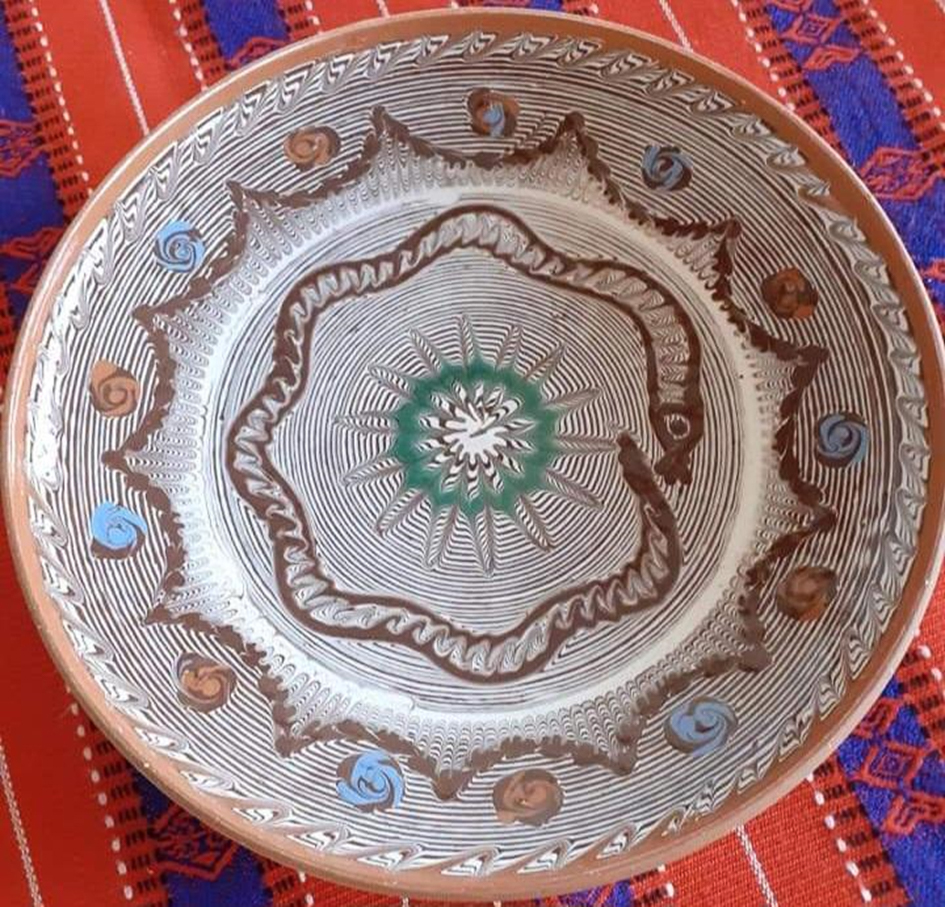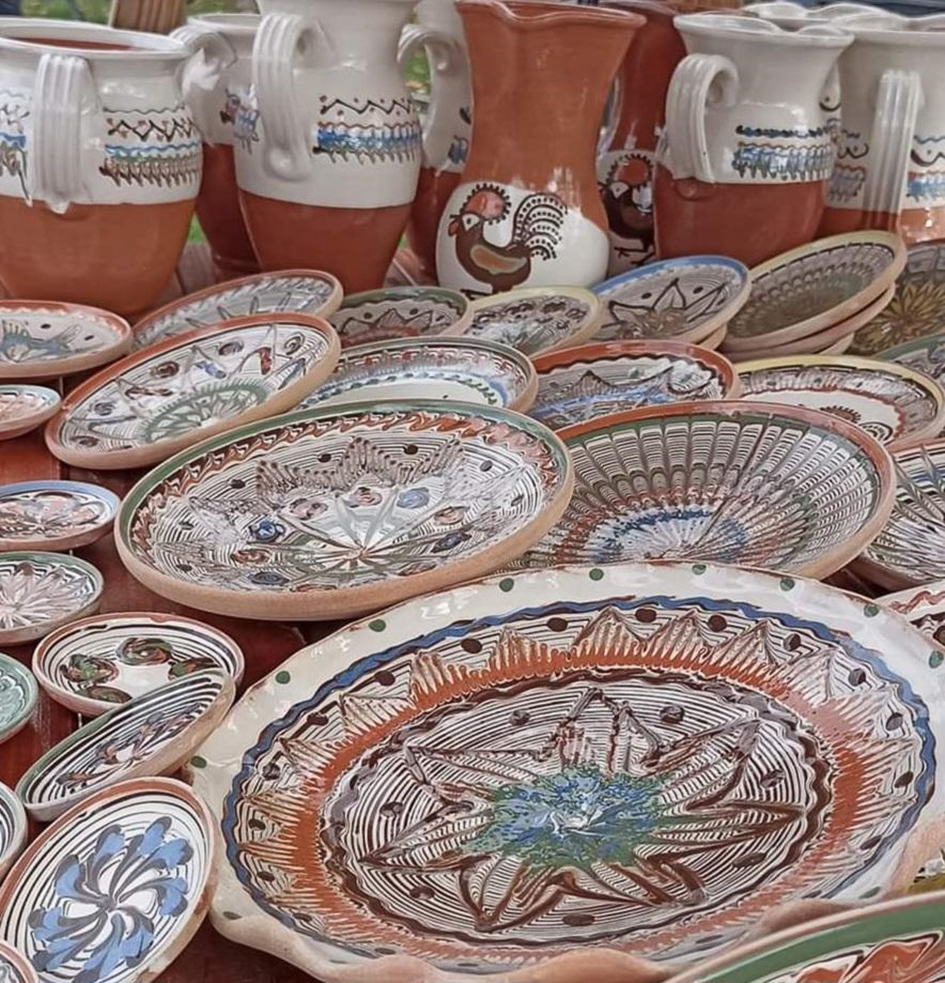
Roxana Turcu celebrates the ceramic traditions of a legendary Romanian village.
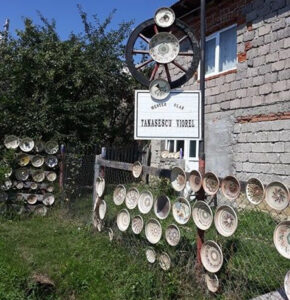
At the entrance to the town of Horezu, you will find Olari Street (formerly Olari village, now an integral part of Horezu city) where there are 18 workshops of potter craftsmen. Horezu pottery was included in the UNESCO Intangible Heritage list in December 2012. According to the Unesco website, the making of Horezu pottery is “a unique traditional craft” practised by both men and women.
At Horezu there is the Association of Ceramists Rooster de Horez which is located in the town of Horezu, Vâlcea County, whose president is Mr Viorel Tănăsescu. In July 2017 we visited him at the workshop and he showed us how to shape the clay and how to decorate the objects.
Mr Tănăsescu learned the trade from his grandfather and carries on this craft with patience, mastering the technique very well the results are true works of art, appreciated for their beauty and authenticity. The raw material used in the manufacture of objects is clay which is manipulated with the traditional wheel.
The potter makes by hand plates, cups and clay pots. The formation of the dish requires skill and speed so that the clay does not have to dry out. After shaping, the dishes are left to dry for a few days and then fired in special kilns. Next comes the decoration of the plate, the exterior finish and drying. The firing takes between 7-12 hours. The man extracts the clay, which is later cleaned and mixed, becoming the raw material from which Horezu objects are made.
The decorative motifs made with the gaita have elements of tradition and others are based on the potter’s imagination.
On decoration, wives who use specific techniques and tools are engaged, with which they draw traditional patterns. The exhortation and the talent to combine shapes and colors define the personality and uniqueness of this type of ceramic. The colors are vivid and range from dark brown, red, green and blue to the famous Horezu ivory. The colors used for decoration are natural less often green (copper) and blue (cobalt).
The current name of Horezu comes from the name of ciuhurez, an owl-like bird that inhabits the surrounding forests.
The Fair of Romanian Folk Ceramics “Rooster de Hurez” is the emblem of the Horezu ceramics fair that takes place every year in Valcea, attended by a large number of potters from the country and from other countries. The rooster often occupies a central space on the bottom of the pot and has its main in the décor of the object.
The Hurez rooster is the most important symbol of the city of Horezu. The rooster is considered the symbol of the resurrection and immortality of the soul. The rooster comes from the houses in Oltenia, where it fulfilled the symbol of victory of light over darkness.

A special status is enjoyed by the symbol of the tree of life. The tree of life symbolizes life, fertility, perpetuation, and regeneration. The victory of life connects heaven and earth. Whatever the way the tree is represented, the images are beautiful and natural, full of color and robustness.
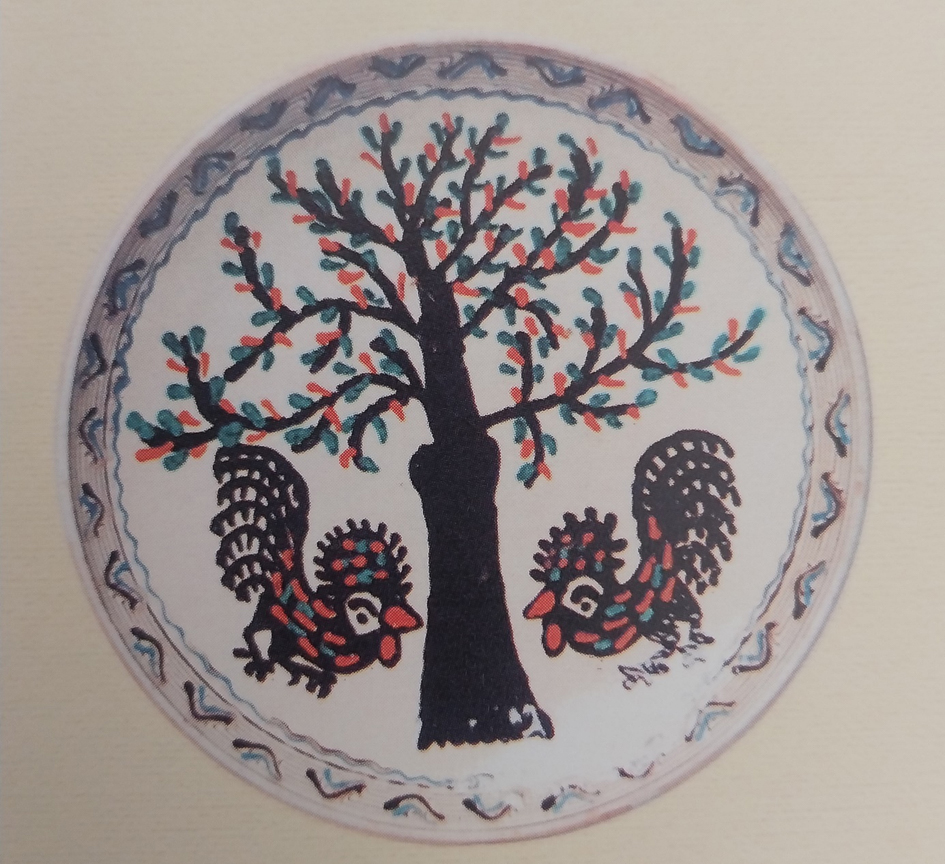
Phytomorphic ornaments compose a representative group and are made in an inexhaustible network of decorative representations. From the leaves to the trees, an entire vegetable world finds its place on ceramic objects. The flower in different variants and interpretations is often the central element and the leaves, the flower buds, the wheat spicule, the corn, the grape occupy a secondary place on the edges. Each symbol has a certain meaning, nothing is left to chance. Symmetry requires order and balance between the parts and constitutes a homogeneous and harmonious structure.
Some of these symbols are made with a template, while others are modelled by potters according to the inspiration of the moment. In both the first and second situations, decorating is a painstaking activity through patience and exhortation. Of course, very good technique, imagination and sensitivity are important in order to be able to make these works of Romanian folk art.
In Horezu people have preserved these characteristics for the last 50 years. They preserve techniques starting from the extraction and processing of clay with the traditional wheel as well as decoration. All these processes are inherited from parents or grandparents or from other Hurezeni potters.
Animal symbols justified the predilection of some hypostases of the snake and the fish with the intention of highlighting the fact that these reasons are supported by the source of life and imagination.
The serpent is the primordial animal, before man, it is the guardian of treasures and is the symbol of life that exists in the depths of the earth. It is also the symbol of fertility, associated with the science of good and evil, and hence with health.
The craft of pottery preserves the tradition of the old Romanian villages where young people are taught by their parents or grandparents the mysteries of this art. Visitors are fascinated how through painstakingly toil the potter can make that piece of land come to life.
Objects made with the potter’s wheel demonstrate skill and love for craftsmanship. When I saw them in the workshop, I understood then that every man has an inner beauty that gives you the joy of achieving special things and in this way, you feel fulfilled with yourself and with those around you.
About Roxana Turcu
 Turcu Roxana lives in Galați, Romania. She has published poetry and prose in various Romanian newspapers and magazines as well as articles about certain events that take place in Bucharest or in the country. In 2021, she won second place in a photography contest in Spain. In 2022, she appeared in a debut poetry anthology from Romania.
Turcu Roxana lives in Galați, Romania. She has published poetry and prose in various Romanian newspapers and magazines as well as articles about certain events that take place in Bucharest or in the country. In 2021, she won second place in a photography contest in Spain. In 2022, she appeared in a debut poetry anthology from Romania.

